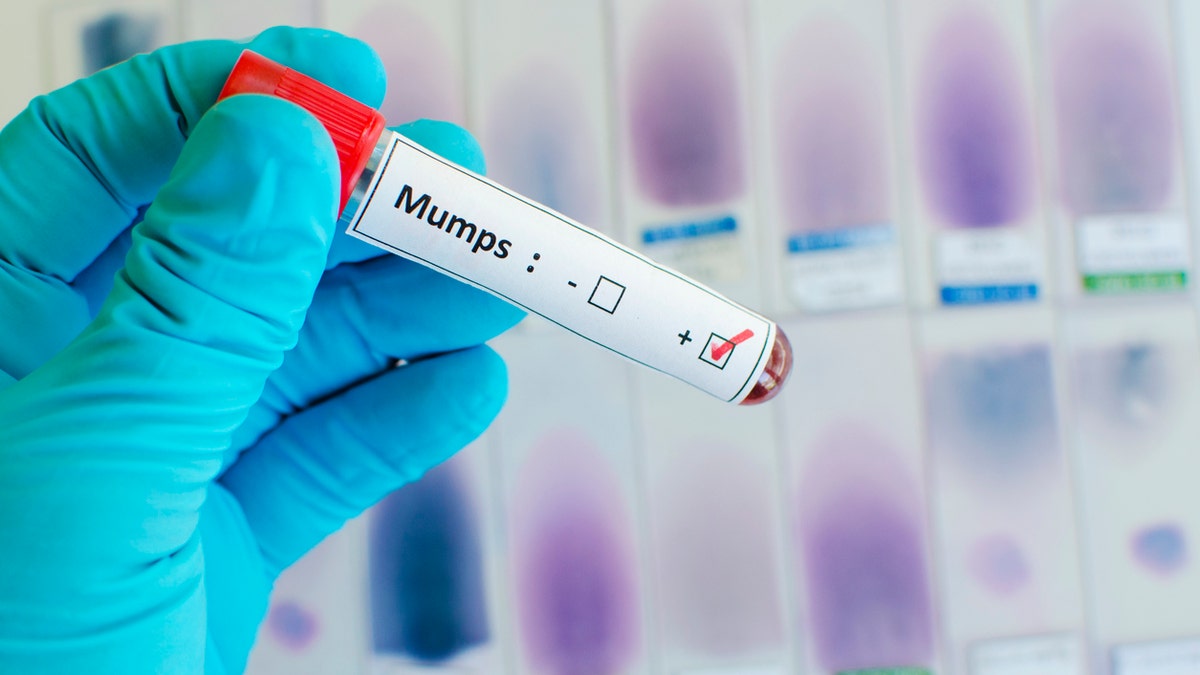
A statement said the school’s health providers are working with state officials to manage and test students with potential symptoms of the disease. (iStock)
Health officials are warning thousands of people who attended a national cheerleading competition in Texas last month to be on the lookout for signs and symptoms of mumps.
A person with the virus attended the National Cheerleaders Association All-Star National Championship in Fort Worth, which drew crowds from 39 states, between Feb. 23 and Feb. 25. Anyone who was present during that time may have been exposed, the Texas Department of State Health Services (DSHS) said in a letter.
No residents in Texas have been reported with the disease as of Tuesday, according to the Dallas News. But that doesn't mean they're in the clear. Here's what you need to know.
Signs and symptoms
The mumps is a contagious viral infection.
When people hear the word "mumps," they may picture someone with puffy cheeks and swollen glands -- after all, those are the most common side effects of the virus. But someone with the illness can also experience muscle aches, a fever and loss of appetite.
"Many people do not have any symptoms," though they can still spread the virus, the Texas DSHS said.
It can take awhile for symptoms to occur.
"The time from being infected with the virus to developing symptoms can be as long as 25 days but is typically 14 to 18 days," the Texas DSHS explains. "People with mumps are infectious three days before to five days after swollen glands appear."
Those who attended the cheerleading competition should be monitored for symptoms through March 22.
How the virus spreads
Mumps is spread by saliva or germs spread in the air through a cough or sneeze. Health officials advise people never to share glasses, utensils, cigarettes or other items, as that could also spread the virus.
Group settings such as a gymnasium, classroom or college dorm are common places for these outbreaks to occur.
"In recent years, there has been an increase in the number of reported cases, from 229 cases in 2012 to 6,366 cases in 2016," the Centers for Disease Control and Prevention (CDC) reported.
In January, at least 130 people across 25 states reported having the mumps.
Treatment and prevention
Most children receive a measles, mumps, and rubella vaccine (MMR) shot at 12 to 15 months and another dose a few years later -- sometime between age 4 and 6, according to the Texas DSHS.
Doctors recommend consulting your family physician to receive your vaccination status. Those who have not received a second MMR shot should get one as soon as possible, health officials suggest.
The CDC says the MMR vaccine is "very safe" and about 88 percent effective with two doses in your system.
"Before the U.S. mumps vaccination program started in 1967, mumps was a universal disease of childhood," the CDC points out on its website. "Since the pre-vaccine era, there has been a more than 99% decrease in mumps cases in the United States."
The Texas DHS says vaccines offer the "best protection," but vaccinated individuals can still become infected.
There's no specific treatment for mumps.
"Because mumps is caused by a virus, antibiotics aren't effective," the Mayo Clinic says on its website.
Most of those infected with the virus, without complications, typically recover within two weeks.




















